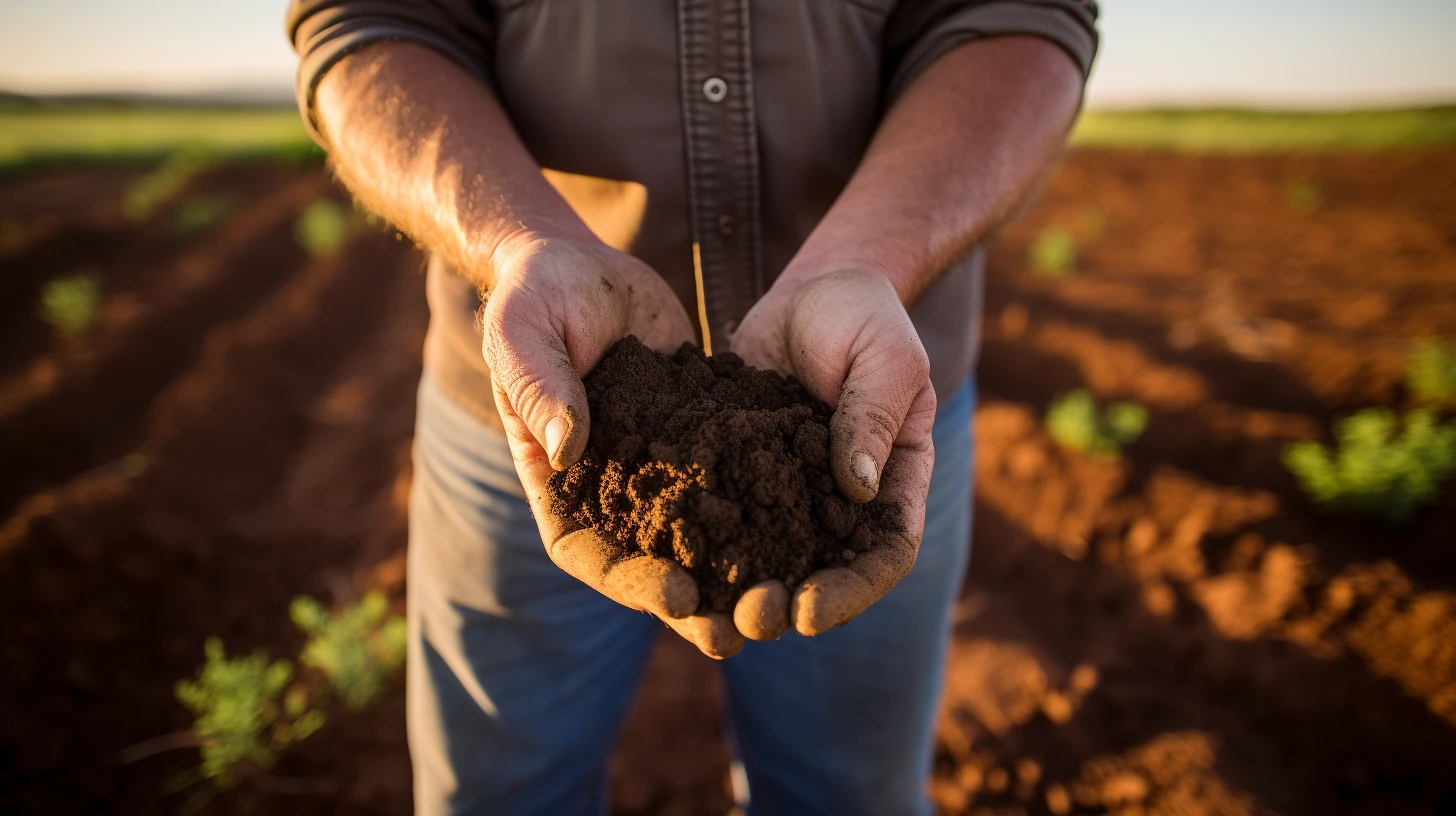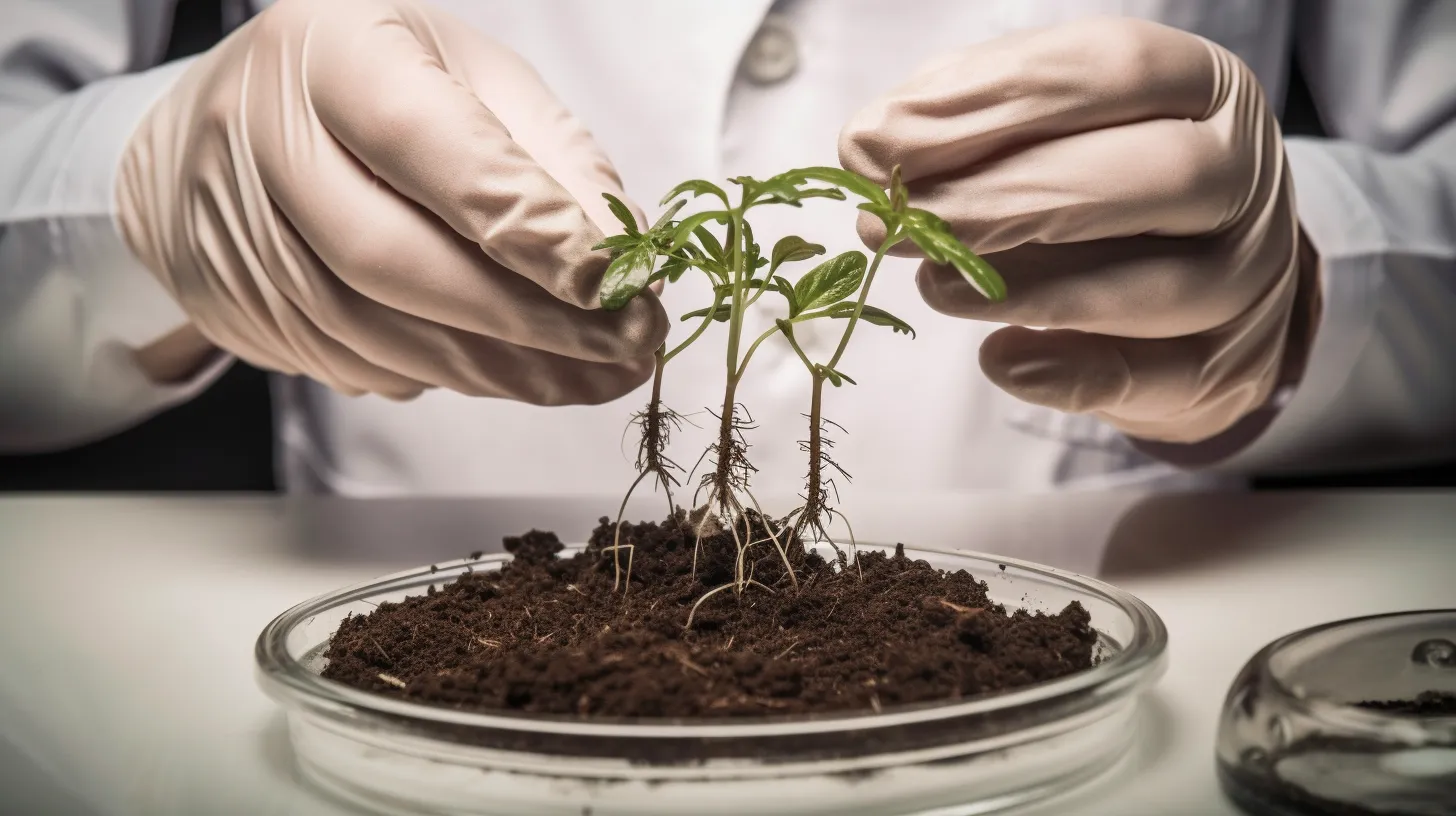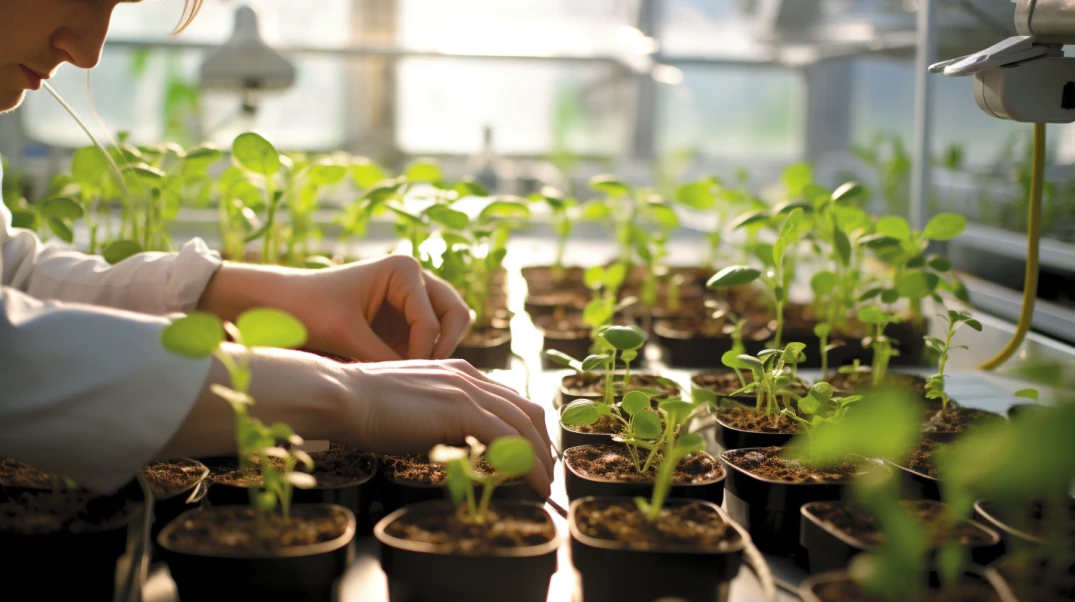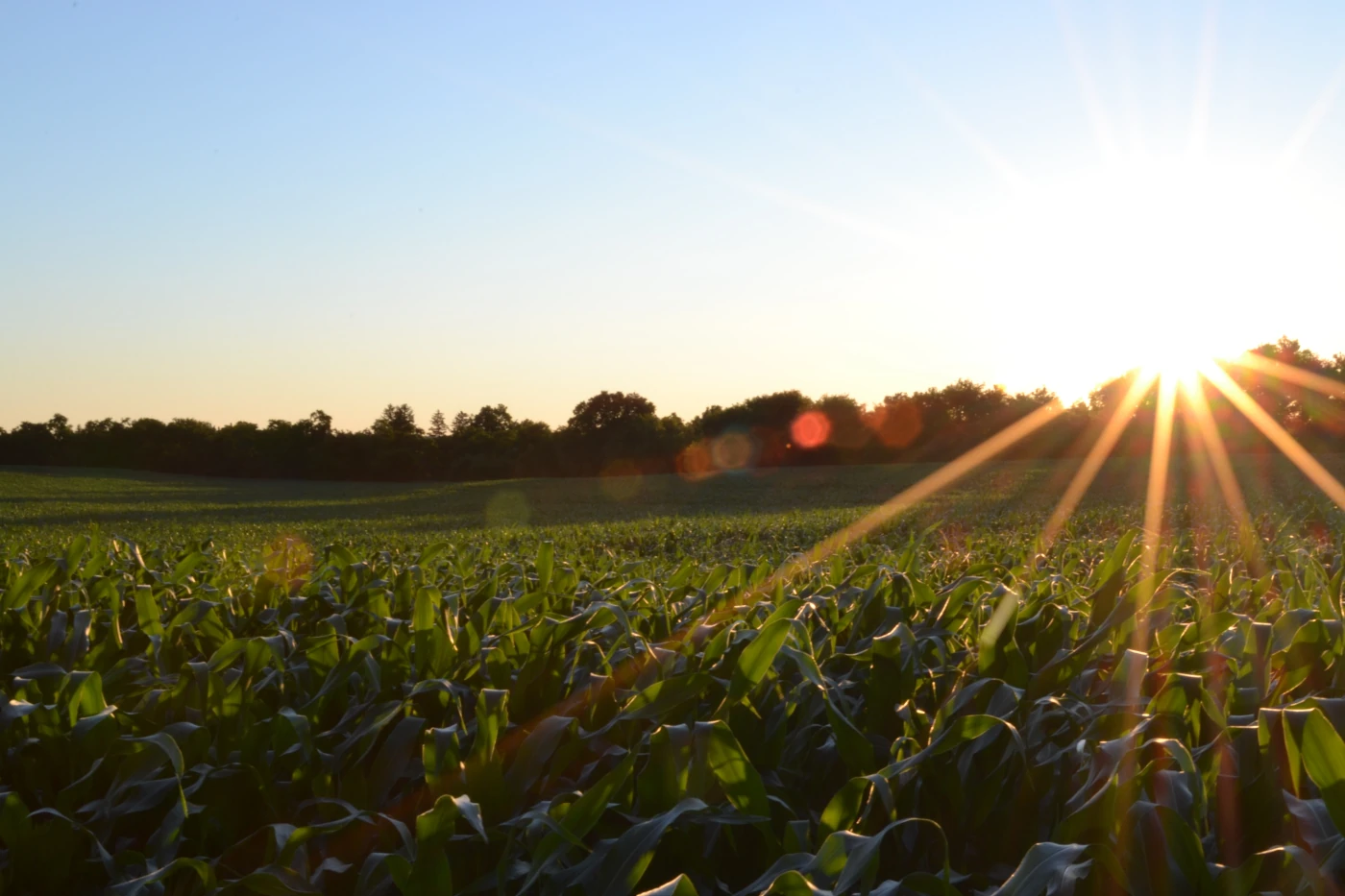To truly grasp the significance of soil health, it’s essential to understand its role not just in agriculture, but also in broader ecological systems. As our environments continue to evolve, adopting sustainable agricultural practices becomes not a choice, but an imperative. Data-driven approaches offer promise in navigating this complex landscape, making the study of soil microbiomes not just academically fascinating but urgently relevant.
Agriculture, the cornerstone of human nutrition, is inextricably linked to the complex strata of terrestrial soil. Beneath the superficial layer, the soil teems with a diverse array of microorganisms that execute specialized functions. Symbiotic bacteria and mycorrhizal fungi collaborate in a finely-tuned biological network that facilitates nutrient uptake in crops. Their synergistic activities are instrumental in optimizing yield outcomes and enhancing soil fertility.
In the following sections, we will explore the critical role of soil microbiomes and their symbiotic relationships, delve into the technological advancements that are helping us understand these complex systems better, and examine how companies like RhizeBio are utilizing data analytics to make strides in sustainable agriculture.

Soil Microbiome: The Unseen Catalyst
Just as the gut microbiome is being increasingly recognized for its role in human health, the soil microbiome is crucial for the well-being of our planet. The complexities are akin to an underground “gut,” where the symbiosis or dysbiosis can significantly impact plant health, nutrient cycles, and ultimately, agricultural yield.
The soil microbiome constitutes an invisible yet potent catalyst in agricultural processes. These microbial communities engage in biochemical reactions that transform organic matter into essential elements, such as nitrogen, phosphorus, and potassium. By doing so, they play an indispensable role in the soil’s nutrient cycle, thereby contributing to crop health and productivity.
While this section introduces the general role of the soil microbiome in agricultural processes, it’s important to note the incredible diversity within these microbial communities. Different soils host unique sets of microorganisms, each with specific roles and preferences. This diversity often extends to even small spatial scales, meaning that even within a single farm, multiple microbiomes could exist.
Having established the importance of the soil microbiome, the following sections will explore the relationships and interactions that form its backbone. These relationships are not merely beneficial; they are essential for the nutrient cycle and, by extension, life as we know it.

The Role of Microbial Interactions
The relationships among soil microorganisms are far from straightforward. Beyond mutualistic partnerships, there are instances of commensalism, parasitism, and even competition. This intricate network of relationships contributes to the resilience and adaptability of the soil microbiome, allowing it to respond to environmental changes in real-time.
While the interactions among soil microorganisms are fascinating, their real power lies in their impact on agriculture. By better understanding these relationships, farmers can manipulate microbial communities to improve soil health, thereby reducing the need for chemical fertilizers and pesticides.
Interactions among soil microorganisms are not merely incidental; they are strategic and often symbiotic. For instance, nitrogen-fixing bacteria, called rhizobia, form mutualistic relationships with leguminous plants, facilitating the conversion of atmospheric nitrogen into bioavailable forms. Similarly, mycorrhizal fungi establish partnerships with plant roots, enabling the efficient transfer of water and nutrients from the soil matrix.
Having understood the foundational role of microbial interactions in soil health, we will now turn our attention to the technologies that allow us to explore these invisible networks. These tools not only deepen our understanding but also offer practical applications for sustainable agriculture.

Technological Advancements in Microbial Research
It’s worth noting that the technological advancements in soil microbiome research are not just incremental but often revolutionary. The pace of innovation in the last decade alone has dramatically accelerated our understanding, turning previously intractable problems into solvable challenges.
In the modern era, advances in molecular biology and genomics have revolutionized our understanding of soil microbiomes. Cutting-edge technologies, such as metagenomics and transcriptomics, allow for in-depth analysis of microbial communities. These tools have unearthed new insights into the functional roles of soil microorganisms, setting the stage for targeted interventions that can improve agricultural sustainability.
As we revel in these technological breakthroughs, it’s crucial to also consider their limitations and ethical implications. For instance, while metagenomics can identify the DNA of microorganisms in a soil sample, it doesn’t necessarily tell us about their real time activity or interaction with other organisms.
Now, with a strong foundation in the technological tools available for biological soil testing, we’ll examine how these advancements translate into real-world applications. Companies like RhizeBio are applying these technologies to deliver actionable insights for sustainable agriculture, bridging the gap between academic research and on-the-ground farming practices.

RhizeBio: Bridging Soil Science and Data Analytics
The role of companies like RhizeBio marks the burgeoning intersection of agriculture and technology, commonly known as AgTech. This sector is drawing increasing investment, promising a future where data-driven decision-making becomes the norm rather than the exception in agriculture.
While RhizeBio’s approach is groundbreaking, it’s important to address the issue of scalability and accessibility. Advanced soil testing and data analytics services need to be affordable and accessible to farmers at all scales, from industrial operations to small, local farms, to make a broad impact.
Exploring Soil’s Microbial Landscape
In the quest to harness the soil microbiome’s potential, farmers and agricultural researchers require precise, data-driven insights into the myriad microbial interactions occurring beneath the soil surface. This is where RhizeBio emerges as a crucial player in this biological frontier. By offering comprehensive soil testing services, RhizeBio allows stakeholders to delve deep into the soil’s microbial community, identifying the key players and understanding their roles in nutrient cycling and plant growth promotion.

Data-Driven Insights through Advanced Technologies
RhizeBio’s approach is grounded in rigorous research and a commitment to delivering actionable data that empowers informed decision-making. Their services extend beyond mere identification of microbial constituents, providing a holistic understanding of the soil microbiome and its functional dynamics. This depth of insight is achieved through advanced molecular and genomic techniques akin to those mentioned earlier—metagenomics and transcriptomics—, rendering a detailed portrait of soil microbial interactions and their impact on agricultural ecosystems.
Proprietary Machine Learning Empowering Soil Analysis
Furthermore, RhizeBio’s soil testing service is empowered by a proprietary AI machine learning model crafted specifically to unravel the complex interplay between soil and plant life. This innovative model fine-tunes the analysis, ensuring a nuanced understanding of soil microbiome dynamics, which in turn facilitates the formulation of data-driven strategies for optimized agricultural outcomes. This tech isn’t just a supplementary tool but a core component in revolutionizing agricultural practices. Discover how this cutting-edge technology can redefine your agricultural practices with RhizeBio’s soil testing services.

Implications for Sustainable Agriculture
Understanding the functional dynamics of soil microbiomes has profound implications for sustainable agriculture. By manipulating microbial communities through biotechnological interventions, it is possible to optimize soil health, reduce dependency on chemical fertilizers, and mitigate environmental impact. Tailored microbial formulations can serve as biofertilizers, offering a green alternative to conventional agricultural practices.
The potential for sustainable agriculture doesn’t just affect individual farmers or communities; it has global implications. By reducing dependency on chemical fertilizers and pesticides, we are taking steps towards a more sustainable food system that can mitigate the challenges of environmental changes and resource scarcity.
While the environmental benefits are clear, there is also an economic dimension to consider. Adopting sustainable practices often requires initial investment but can lead to cost savings in the long term. Moreover, biofertilizers and other biotechnological solutions can open up new markets and revenue streams for farmers.
As we’ve explored the science, technology, and practical applications behind soil microbiomes, it becomes clear that this intricate web of microorganisms holds the key to sustainable agriculture. The conclusion will tie these threads together, underscoring the critical role of soil health in our agricultural ecosystems.

Conclusion
As we wrap up this exploration of soil microbiomes and sustainable agriculture, the work is far from over. Researchers and practitioners alike are urged to continue pushing the boundaries, employing advanced technologies and data-driven approaches to unlock further secrets held within the soil.
The intricate web of soil microorganisms is a critical component of agricultural ecosystems. Their biochemical activities and symbiotic interactions underpin the health and productivity of crops. With advancements in biotechnological research, the potential to harness the power of soil microbiomes for sustainable agriculture has never been more promising. The ongoing exploration of this hidden world promises to unlock new avenues for innovation in agricultural science.
The journey towards fully understanding and harnessing the power of soil microbiomes is fraught with challenges, yet rich with opportunities. Future research could focus on the long-term impacts of biotechnological interventions, or delve into the more intricate ways environmental changes affect soil microbial communities.
The complexities of soil health and sustainable agriculture are subjects that concern us all. If this article has piqued your interest, we encourage you to delve deeper into the subject matter. Whether you’re a farmer, a researcher, or a concerned citizen, your engagement can make a difference.
